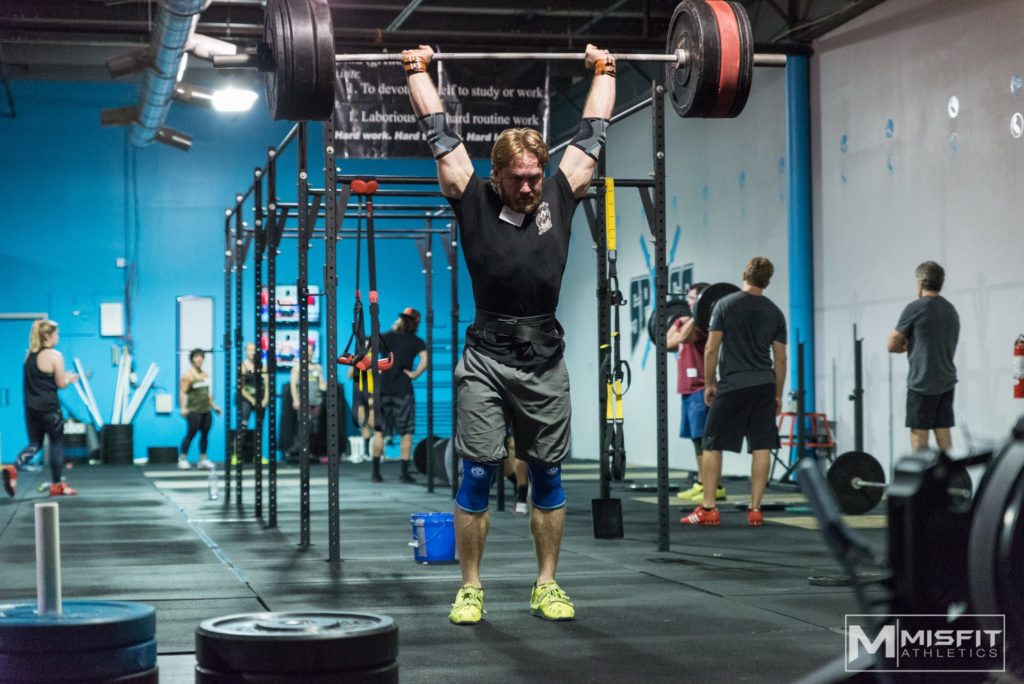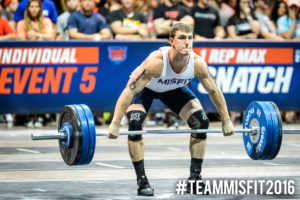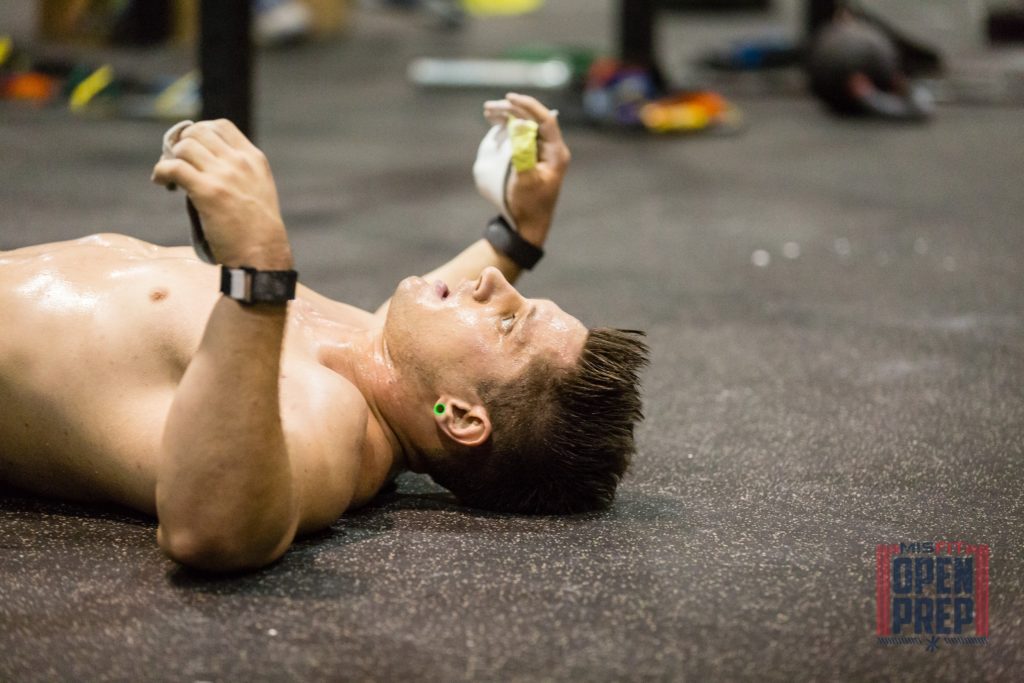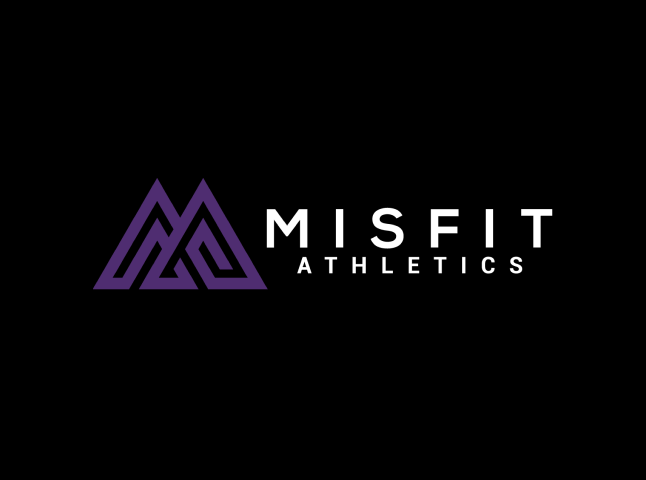Four Ways to Improve Your Clean and Jerk

“Four Ways to Improve Your Clean and Jerk” by Seth Spencer Page
Over the past year, the MisFit Athletics team has had the opportunity to travel and visit many CrossFit Affiliates across the country. During our training camps, we spend a couple hours during the first evening practicing and executing the Clean and Jerk. Most people PR or come damn close. It’s not because I am some incredible weightlifting savant, but because I have identified four common issues that the majority of CrossFitters demonstrate while setting up for, and executing the Clean and Jerk.
The Clean-
Issue 1. Your grip placement is too narrow!
Countless athletes have been taught to place their hands around the bar, extending their thumb towards the other hand. The end of their thumb touches where the knurling pattern and smooth part of the bar meet on both sides. Then, they close their thumb into their hand for the hook grip. While I’m 100% always for the hook grip, that “rule of thumb” for hand placement is not a one size fits all. In my opinion, that’s probably the correct grip width for a petite female. Grip will vary from athlete to athlete, (based on limb length, set up, mobility, etc.) but most males should be using a width substantially greater than described above. This is for a couple reasons, first being the set up position. You need room to push your knees out. This “knees out” will allow for a slightly lower hip placement and more upright torso.

A major problem with a lot of lifters is that their back angle is too parallel to the floor, looking similar to a deadlift position. If you begin your pull with the angle of your femur and torso being too small, as described above, you are generally forced into less than advantageous positions with the bar. Typically the hips come too far forward, the pull is early, and the bar never comes anywhere near the hip crease, sending the weight forward. Then you have to chase the bar by jumping forward to make the lift. Not ideal. The second reason to widen your grip ties in with the first. If you are patient on the pull, making it to power position, the added width to your grip allows to bar to be swept higher through the thighs and nearer to the hips before vertical extension. It’s the same concept as choosing your snatch grip, you want the bar close to the hip crease. A happy compromise between your old narrow Deadlift grip and your wide Snatch grip should be your Clean Grip.
https://vimeo.com/108060885
Issue 2. You should move your feet at all costs.
Many athletes I work with have developed an inexcusable habit, they don’t change their foot position from the pull, to the catch in their “squat.” There are two quick issues I have with this practice. First, if you start with your feet directly under your hips, and like most people, don’t have superhuman type mobility, catching a 90%+ 1RM clean in that position will be very unstable. You are not creating room for your hips in the squat, which in turn can lead to the lack of firing the glutes and hamstrings while trying to get out of the bottom. Not to mention the slight rounding of your back, causing your midline to have the inability to brace, and you losing the clean forward in a collapsed position. The second issue comes from those pulling with a wider base, feet basically in a squatting position. Simply put, this choice can limit torque, speed, and overall force production on the pull. When setting up for a Clean, I ask my athletes to point their toes forward with their feet directly under their hips. They then push their knees out while pulling themselves into tension during the set up. Then they pull from the floor into vertical extension. I then want my athletes feet to move out very quickly into a more stable squat position for all the reasons explained above. Move your damn feet.
https://vimeo.com/108058932
The Jerk –
Issue 1. Your dip drive is forward, not vertical
During our dip drive we want every bit of force used to driving the bar off our front rack vertically, so why do so many people drive the bar up and forward? Staying perfectly vertical in a movement ideally executed in a short, fast, aggressive manner is not easy. When the Jerk goes wrong, it is usually wrong long before the bar has left your body’s point of contact (front rack). When cueing athletes, I usually say “Knees out over your toes” which is very different from knees forward over your toes. The dip should be a quick and short, but controlled, active pulling of your hips down while pressing your knees out. All of this while keeping your torso vertical and the weight in your heel and midfoot. The issue of the bar moving forward is created when one of a couple things happens. Either the dip goes too deep and you just don’t generate enough force, or your weight shifts to the front of your feet during the dip. Once the weight goes too far forward, there is no saving it. You will still drive up, and the energy will be sent up and out in front of you. You will inevitably chase the bar when you split, over-reaching your back foot, and likely misplacing the front foot, causing you to lose the lift forward. When the dip drive is done correctly, the bar will move only vertically, allowing easier transition under the bar into a solid Jerk.
https://vimeo.com/108058931
Issue 2. Diving under the bar, and not pressing under the bar
Okay, so your dip drive is solid, why are you still failing your Jerk? Could be a number of things, including foot placement on the split (that topic warrants its own article). However, what I see a lot of is a lack of tension between you and the barbell, after completion of the dip drive. What I mean by this is that athletes are not pressing themselves under the bar enough. They try to hurl the bar off their chest and dive under it, hoping to catch a massive amount of weight in a locked out position. This creates numerous problems. If you watch a jerk by somebody who does not actively press themselves under, they may make the lift, they may not, but you will almost definitely see their shoulders buckle when trying to catch the weight . When pressing against the bar, and pushing yourself under, (after the dip, drive of course) the constant tension allows athletes to receive the weight in a more solid, active position. Lack of tension during the Jerk can allow you to lose the bar forward or backwards, instead of making a PR lift that should be in the bag.
https://vimeo.com/108058930
It’s important to remember that there is no “one-size-fits-all” prescription for weightlifting. As coaches, we try to optimize your potential by taking into account your limb length, levers, mobility, and strength. There is much, much more that goes into mastering this lift than you will find in this article. However, in all my experience in coaching weightlifting within the “Sport of Fitness”, these four issues have presented themselves time and time again. So, if you cannot attend one of our camps to get picked apart by us, you can take a look at these principles and continue to sharpen the axe.


